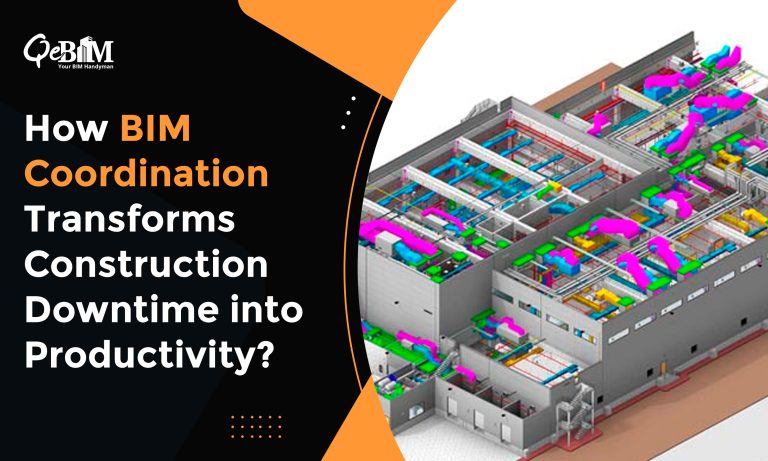How BIM Coordination Transforms Construction Downtime into Productivity?

Introduction:
BIM has emerged as a trailblazer in the architecture and construction scenario. As projects face delays and interruptions worldwide, it is the opportune time to shift focus to BIM coordination. This advanced technology not only streamlines the construction process but also ensures efficient collaboration among stakeholders. In this blog post, we’ll get deeper insights as to into why utilizing downtime for BIM coordination can be a strategic move to enhance the overall success of your building projects.
1) Understanding BIM Coordination:
BIM Coordination Services involves the integration of digital models and information from various stakeholders involved in a construction project. This includes architects, engineers, contractors, and subcontractors. The goal is to create a comprehensive and centralized digital representation of the building, fostering collaboration and minimizing errors during the construction phase.
2) Streamlining Design and Collaboration:
One of the primary advantages of BIM coordination is the ability to streamline the design process. During downtime, project teams can collaborate more effectively on the BIM platform, ensuring that all design elements are thoroughly integrated and clash-free. Identifying and resolving clashes in the digital realm significantly reduces the likelihood of expensive errors and rework during the construction phase.
3) Clash Detection and Resolution:
BIM coordination tools offer robust clash detection capabilities. These tools can detect discrepancies or conflicts among various architectural components, including structural and MEP (Mechanical, Electrical, Plumbing) systems. With downtime at hand, teams can meticulously go through the digital model, addressing clashes and optimizing the design for better efficiency and constructability. Adopting a proactive strategy mitigates the potential for on-site conflicts and the consequent delays.
4) Improved Decision-Making:
Utilizing downtime for BIM coordination allows project teams to make informed decisions based on a comprehensive illustration of the project. Architects, engineers, and contractors can collectively assess the impact of design changes, material selections, or system modifications in real-time. In addition to accelerating the decision-making process, this also improves the overall quality of the project.
5) Cost Savings and Risk Mitigation:
Investing time in BIM coordination during project downtime can lead to a good amount of cost savings in the long run. Through the identification and resolution of issues in the digital model, construction teams can steer clear of expensive errors during on-site operations. Additionally, the ability to simulate and analyse different construction scenarios in the virtual environment helps mitigate risks associated with design changes and unforeseen challenges.
6) Enhanced Communication and Collaboration:
BIM coordination fosters efficient communication and collaboration among various project stakeholders. During downtime, teams can use the BIM platform to share updates, insights, and changes seamlessly.This not only enhances the overall communication within the project but also ensures that everyone is aligned on project milestones, goals, and challenges.
7) Training and Skill Development:
Downtime provides an excellent opportunity for training and skill development in BIM coordination tools. Teams can use this period to enhance their proficiency in using advanced software and staying updated on the latest industry standards. Investing in the skill development of your team can pay off during the project execution phase, leading to increased efficiency and effectiveness.
Conclusion:
While the downtime can be frustrating for construction projects, it presents a unique opportunity to invest in BIM Modelling Services. By leveraging advanced digital tools and technologies, project teams can streamline the design process, identify and resolve clashes, make informed decisions, and ultimately enhance the overall success of their building projects. The proactive application of BIM coordination not only reduces costs and mitigates risks but also establishes the foundation for a more collaborative and efficient construction process. As we navigate through challenging times, embracing the potential of BIM coordination can be the key to emerging stronger and more resilient in the face of future construction challenges.